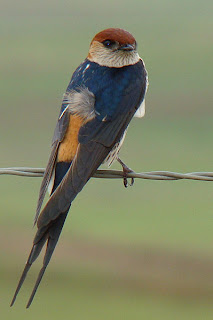Today is the 5th birthday of my parents' dog. Not bad for a little guy who almost died of an auto-immune disorder a few years ago. Did you know dogs can have blood transfusions? Well, you do now!
Anyway, we have no idea what that dog is. He's medium sized and orange with a weird husky-like tail. We've just always called him a Dingo. So today, for his birthday, we're going to learn about the actual Dingoes of Australia.
The subspecies
Canis lupus dingo actually refers to more than just Australian Dingoes. New Guinea Singing Dogs, Thai Dogs, along with a handful of other types are also classified under that subspecies. But today let's stick to just the Dingoes.
Dingoes first arrived in Australia from Asia around
4,000 years ago. Because there was still a significant amount of water to cross to get there, it is believed that the original Aborigines brought the semi-domesticated dogs with them. Once they arrived on the continent, the dogs spread quickly. Fossils have been found throughout Australia that date back 3,500 years. Dingoes were first described by science in 1699, when they
lived both with Aboriginal populations, and as wild packs.
Dingoes sometimes live as solitary animals, and sometimes in small packs of around 10 members. They are very opportunistic, and will feed on both plants and animals. The population
greatly expanded once European Settlers arrived with their livestock, as the dogs now had a massive new food source.
Because they prey so readily on sheep, Dingoes are considered a nuisance in many areas. There have even been
fences erected to keep the dogs away. They also get a lot of blame for damaging Australia's native animal populations. Some believe that the Dingo is partly responsible for the extinction of the Thylacine, or Tasmanian Wolf, since they competed for food and space.
Dingoes are both persecuted protected, depending on the location. Genetically pure Dingoes are becoming very rare, since they will interbreed with domestic dogs, and efforts are being made to keep the pure Dingoes and the hybrids separate. Dingoes are also occasionally
kept as pets, though I wouldn't recommend it.
IUCN Status : Vulnerable
Location : Australia
Size : Height up to 2ft (60cm), Weight up to 44lbs (20kg)
Classification : Phylum : Chordata -- Class : Mammalia -- Order : Carnivora
Family : Canidae -- Genus : Canis -- Species : C. lupus -- Subspecies : C. l. dingo































